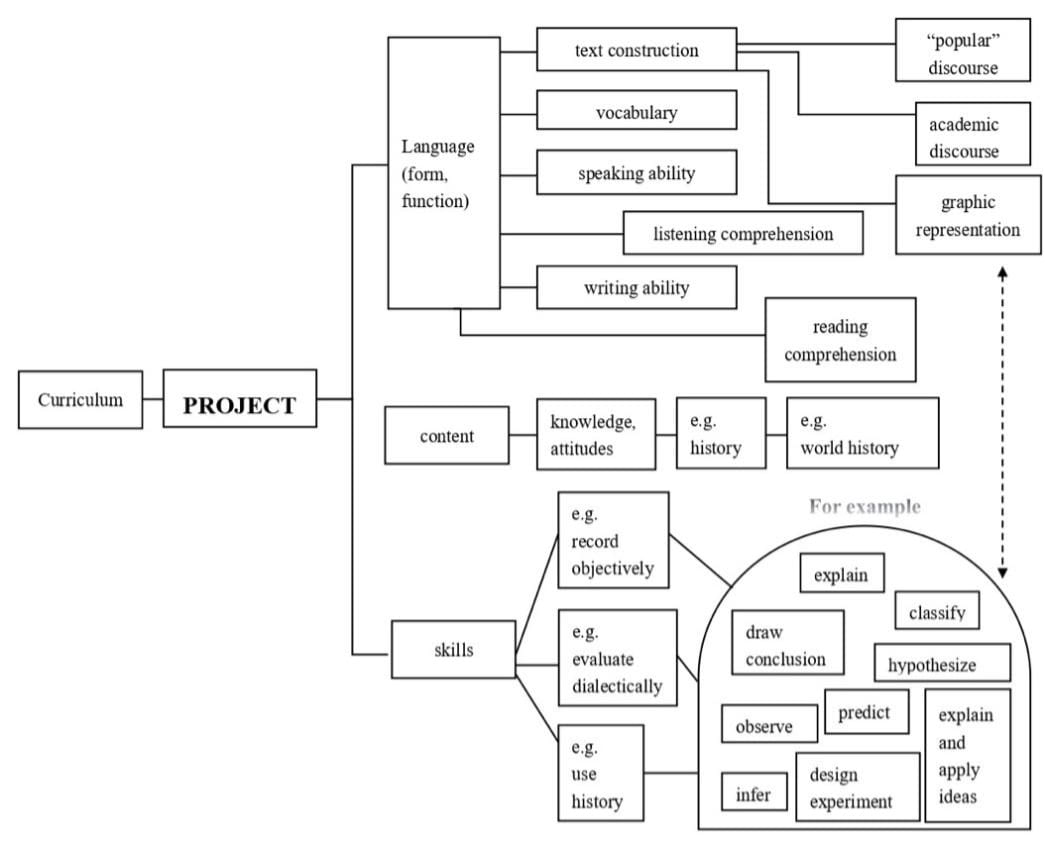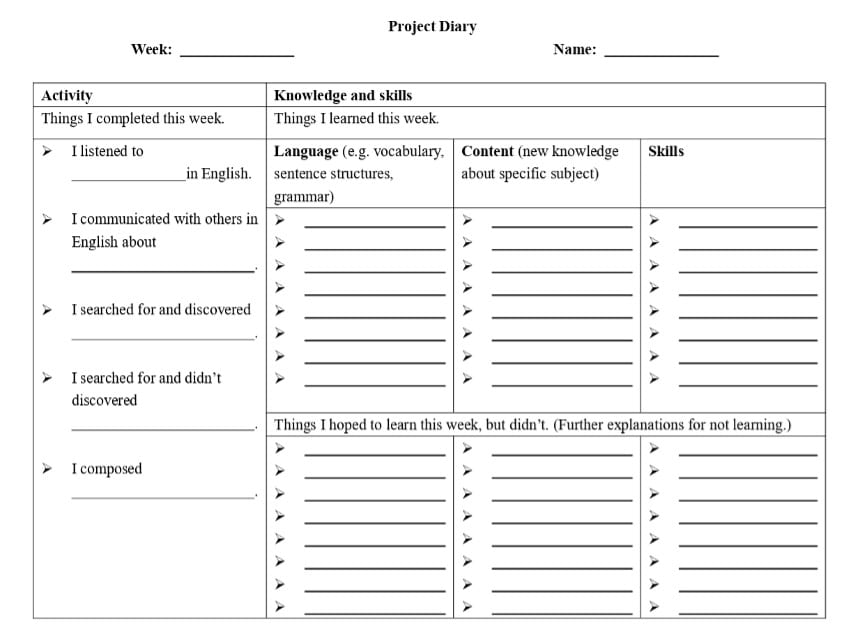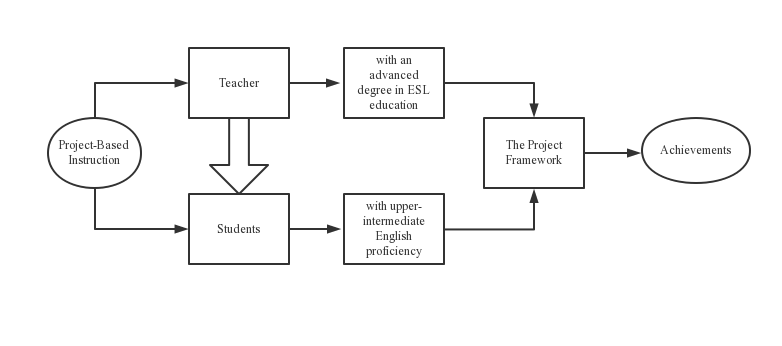Edited by LIU Yujia, LU Leyan, YAO Lili, YAO Yuyong
This post is based on The Project Framework: a tool for language, content, and skills integration by Beckett and Slater (2005).
Have you ever thought about acquiring language, content, and skills simultaneously?
Image from pixabay.com
To encourage students’ concurrent acquisition of language, content, and abilities in the target language, project-based instruction, a student-oriented teaching method, is implemented in ESL classes.
Teachers implement it in class to achieve the following goals:
- challenge students’ creativity;
- foster independence;
- enhance cooperative learning skills;
- build decision-making, critical thinking, and learning skills;
- facilitate the language socialization of ESL students into local academic and social cultures (Beckett, 1999).
However, ESL students hold inconsistent attitudes toward this project-based approach. Some approve of it, while some are dissatisfied because they are unable to recognize its value of language learning (e.g. English grammar, vocabulary).
To conquer these philosophical, cultural, and linguistic conflicts and discrepancies between students and teachers, Beckett (1999) initiated a methodological tool, “The Project Framework”.
The Project Framework
Conceived on the theoretical basis of Mohan’s Knowledge Framework (Mohan, 1986), The Project Framework is a cultural tool to help socialize students into a new way of thinking about language and language learning and a mediation tool (Vygotsky, 1978) to clarify how the project works in class to students.There are two critical components of The Framework:
- The planning graphic – an explicit reminder
- The project diary – an integral reflection
The planning graphic:
As is shown in Figure 1, the graphic categorizes the educational goals into three aspects – target language, content, and skills. Students fill in the boxes under the three catalogs sequentially with what they plan to learn in class. Also, the presence of a dotted line indicates that many skills listed in the planning framework can be captured visually in different graphic representations (e.g., flow charts, decision diagrams, tables, and classification trees).
The planning graphic explicitly reminds students that the application of the project in ESL class equips them with academic literacy in a second language context.
Figure 1. Planning graphic (adapted from Beckett’s Planning graphic (2005))
The project diary
As is shown in Figure 2, in the form of the weekly summarization task, the project diary inspires students to write down what language, content, and skills they have learned this week. Students’ achievement and the planned yet not accomplished part should both be involved.
Figure 2. Project Diary (adapted from Beckett’s Project Diary (2005))
Pros and Cons of the Project-based Approach
Pros: Learn language, content, and skill simultaneously
Apart from learning content, the project-based approach creates a direct link between students’ acquisition and use of the target language and provides manifold opportunities for them to practice abilities they have developed with each other and with native speakers through communicative interactions.
Cons: Students’ varying levels of enthusiasm/autonomy
Problems caused by students’ varying levels of enthusiasm remain unsolved. Students who learn English in a context where language, content, and skills are regarded as relatively separate subjects, may be reluctant to find projects motivating and challenging. This approach, therefore, requires a high level of learning autonomy during the project class, which suggests that it may not be universally applicable to every ESL learner.
What do you think of the role that students’ autonomy plays in the application of the approach and the framework?
Pros and Cons of the Project Framework
Pros: Help students understand the content-based view of language learning.
The project framework enables students to fully appreciate the value of project-based instruction. It promotes the implementation of project-based instruction, achieving a positive integration of language, content, and skills in the teaching and learning process.
Figure 3. Project-Based Instruction Model
Cons: Limited generalizability
Our group tentatively created a model to display the general process of the Beckett and Slater’s study (2005), as is shown in Figure 3. It can be observed that the participants were selected with certain conditions. The teachers had extensive experience in ESL education, as well as an interest in teaching language and content integration. The students’ English proficiency was in the upper-middle range. Therefore, further studies are needed to examine whether the effectiveness of using the project framework is limited by teachers’ teaching experience and students’ language proficiency. Certainly, the samples for the study were limited, only 57 people; thus, more tests need to be performed to check the generalisability of the framework.
What do you think of the effectiveness of this framework for language teachers and learners? Please share your thoughts in the comments section!




1. The level of students’ autonomy is the foundation of language learning in the project framework. When the students need to integrate three subjects: content, language, and skill, motivation play an essential role in promoting students’ learning. Then the motivation is highly influenced by students’ autonomy.
2. It provides teachers the opportunities to combine language teaching with content and skill. This integration can make teachers rethink their teaching methods.
Agree with your comments.
Students’ motivation is an significant factor in this teaching model. For example, it will affect students’ performance and quality of the planning graphic, for example, whether it covers all the knowledge needed, whether all the elements are listed in an organised way.
The planning graphic is helpful to help teachers design curricula, and the project diary can help students to set study goals so that their study autonomy and initiative are guaranteed.
However, this method is limited in that it requires students to have certain language proficiency and language teachers to be experienced enough to combine content teaching and language teaching. In the contexts of ESL and EFL, maybe it can be adopted in senior high schools or universities.
I’m a bit surprised to hear that you feel that primary students don’t have good enough language ability to do projects. But I think this comes down to how you define a project – it is possible to create tasks that are at the right level of challenge for all kinds of students, I think, especially if the teacher plays an active scaffolding role to support students.
I also agree that this framework is conducive to language learning. But to be honest, in mainland China, I think it can only be promoted in universities and international schools for now. Completing a project can be more complex and time-consuming than finishing a simple task since students must manage various aspects of a project, such as planning, research, and execution, and solve some unexpected problems. But due to the pressure of homework and exams, it is unrealistic for students in ordinary schools to do this kind of project for several months, even if they have achieved certain English proficiency.
I also think that Project-based instruction may not be suitable for EFL beginners, as this approach involves many tasks, which are even hard for them to understand, let alone to accomplish. The subjects in this experiment are tertiary students who already have some English knowledge, while for primary students, the top priority may be to grasp certainly basic English knowledge as quickly as possible.
I believe the project graphics and project dairy are effective for both language teachers and learners. Firstly the graphics allows people to understand what a project consists of and how it progresses. Secondly, the project diary makes it possible to clarify everyone’s responsibilities, so that everyone has a clear division of labour and works together to win.
Yes! It is creative and interesting to apply this framework to group projects! In Beckett and Slatter’s study, the framework was used by students to manage their individual tasks. If we want to let the framework guide students’ cooperative projects, some changes may be needed in adjusting some details in the planning graphic and the project diary.
The Project Framework has shown promise as an effective pedagogical tool for promoting language learning and development. However, like any teaching approach, its effectiveness may depend on factors such as teacher expertise, the learning context, etc. It is important to evaluate the effectiveness of The Project Framework in specific contexts to determine its suitability and effectiveness for different learners and learning situations.
A project framework is definitely a facilitating reaching tool for both teaching and learning. It can show the students that contents and the procedures included in a project in a clear manner. And students can get a good understanding of what they need to do in the project, but its effectiveness depends on teachers’ competency and the teaching context.
The role of students’ autonomy is essential in the application of the Framework, in which learners are expected to take an active role in the learning process. This also brings limitations to the implementation of this framework, as it requires high autonomy from learners. So I think maybe it is more suitable for small-scale use with learners chosen previously.
Agree with your point that it is more suitable for small-scale use. I think teachers can do a pilot research before they use this one when teaching. And then make some adjustments according to the results of pilot research.
Agreed. And also teachers need to assign the suitable group size If it’s too large, the free riding problem might exist, and the students who happen to be passengers may not learn anything.
The prospect of the project seems bright but the attainment of language, content, and skills simultaneously has a lot of prerequisites. According to my personal experience, participating in such projects requires students to invest in a lot of time, work earnestly and have great communicative skills. Just as many comments mentioned, the realization of it really relies on students’ willingness. But when different students with different levels of willingness may lead to an unbalanced workload, unsatisfactory project effect, or even worsening of relations. Besides, it poses higher requirements for teachers to design attractive and effective projects, monitor the process as well as detect and solve problems at any time. When all the students and the teacher coordinate together, the expected effect can be achieved.
You mention that “participating in such projects requires students to invest in a lot of time”, so do you think the result of language learning is proportional to the time invested? Speaking from my perspective, the short-term results may not be obvious, but the long-term results should be good.
It is true… PBI seems ideal for language learners to integrate language, content, and skills simultaneously. However, the actual effects are influenced by so many factors which are difficult to control.
In my opinion, PBI can be an effective approach for language teachers and learners, as it provides an authentic context for language learning, encourages collaboration and teamwork, promotes language development, and develops higher-order thinking skills. However, like any approach to language teaching, the effectiveness of PBI depends on a variety of factors, including the quality of instruction, the relevance of the projects, and the motivation and engagement of the learners.
I completely agree with your comment. The project-based approach can be an effective method for language teaching because it provides learners with authentic and meaningful contexts for language use, which can help to increase their motivation and engagement in the learning process. The approach also encourages collaboration and teamwork, which can help to develop learners’ social and communication skills.
I think the Framework is good for both students and teachers. As for students, they plan what they are going to do, which helps them visualize their hard work. As for teachers, they can get feedback from knowing what students are doing and adjust their curricular design. But at the same time, I do think that it is necessary for teachers to take learners’ autonomy into account, and provide students with supervision and instructions in time.
Yes, the learners autonomy should definitely be taken into account . It seems that the students who are able to recognise the value of project-based frameworks can achieve higher goal of language learning. The study also have shown that not all students can see the value of this approach for language. However, it is also mentioned that even the students varied in the levels of enthusiasm, most of them can use it appropriately and effectively, which suggest the validity and feasibility of the framework.
If applied appropriately, this framework is beneficial. To begin with, teachers should receive thorough training in order to understand and apply the procedure. Also, students must be able to learn independently. I believe that students’ capacity for autonomous learning is not innate but rather depends on received instruction. As a result, teachers can employ techniques like flipping classroom to train students’ abilities to learn independently before using this framework to teach them how to learn.
Teachers’ understanding of this model and teaching proficiency is also important. Whether teachers’ instruction on what students should do is clear or not is an critical indicator before students use this model during their learning.
I think this framework can be very helpful. It can be served as a facilitator of the integration of language, content and skill. It provides new perspectives and opportunities for both teachers and students to teach and learn language. However, great effort should be taken to eliminate the limitations mentioned in the post and makes it as applicable as possible.
Agree! This framework can help both teachers and students to provide more learning opportunities and possibilities for some points they may have overlooked. It is worth thinking about that does this framework appropriate for every type of classroom? From my perspective, projects are sometimes limited and lack flexibility. Both teachers and students need to be quicker to address arising issues.
Students’ autonomy is important for framework-assisted and project-based instruction. Once learners are not interested in the topic or content of the project, their participation will be minimal. This is bad for their language and skill learning. So how to explore students’ interest and combine it with teaching is a question for teachers to think about.
There is no doubt that this project framework is very helpful for language learning. By completing a planning graphic students are able to identify their learning goals and by keeping a project diary they can recognize their shortcomings in time. However, this also requires students to take full initiative and can even be a burden for less self-motivated students.
I believe that it is achievable for educators to design a lesson plan that considers enhancing students’ language, content, and skills simultaneously as it is required in New Curriculum by the Department of Education. Project-based class is often seen in high schools too as alternative class to boost students’ problem-solving abilities and critical thinking, but it is more practical among students with higher language proficiency. And I think this framework is helpful for novice teachers to form their class and make their lessons logical. This framework, if printed for students, enables them to be clearer about what they are going to do and more focused on the problem they are going to solve in their class.
It is a good framework to guide students’ learning and to assist them in reflecting on their learning process. But I feel that student autonomy is crucial to the project framework to maximize its effectiveness. The project framework is effective only if learners really want to monitor their learning process and record their learning process from the heart. Otherwise, the project framework would be useless, as students are forced to complete it so they would note down roughly or even make up some content.